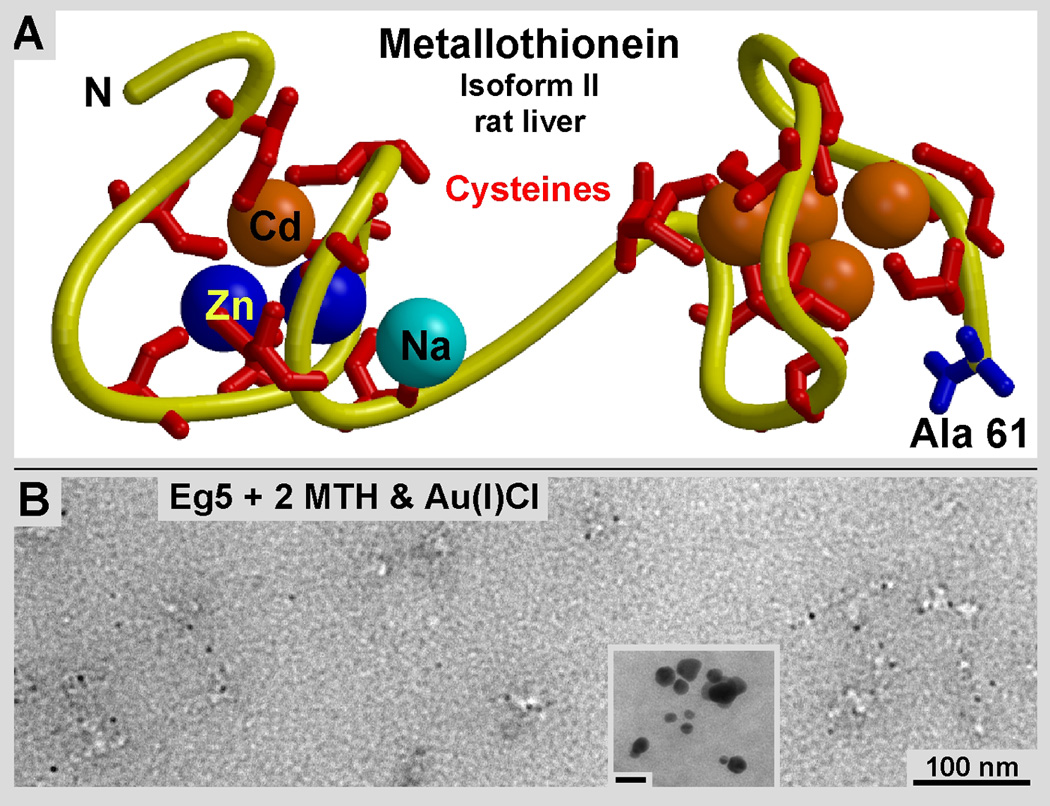Figure 1.

Structure and metal-clustering properties of MTH. A: Atomic structure of rat liver MTH (isoform II) at 2.0Å resolution (PDB: 4MT2; Braun et al., 1992). The structure was solved with the help of to five Cadmium ions (Cd: orange) clustered here within the molecule. MTH contains twenty cysteine residues that achieve the clustering of twenty or more gold atoms at the positions of the ions found here within the crystal structure. B: Purified Eg5 motor domains with two copies of MTH cloned to its C-terminal end (Eg5-2MTH). The sample was incubated with a 10 mM Au(1)Cl solution that was reduced by the MTH domains and formed small gold clusters in the order of 2–3 nm. Note that the clusters are all associated with protein mass. No self-reduction has occurred. However, when left alone without protein the gold solution tends to reduce itself into large clumps (inset in B), which fortunately are absent when MTH domains are present (B).
